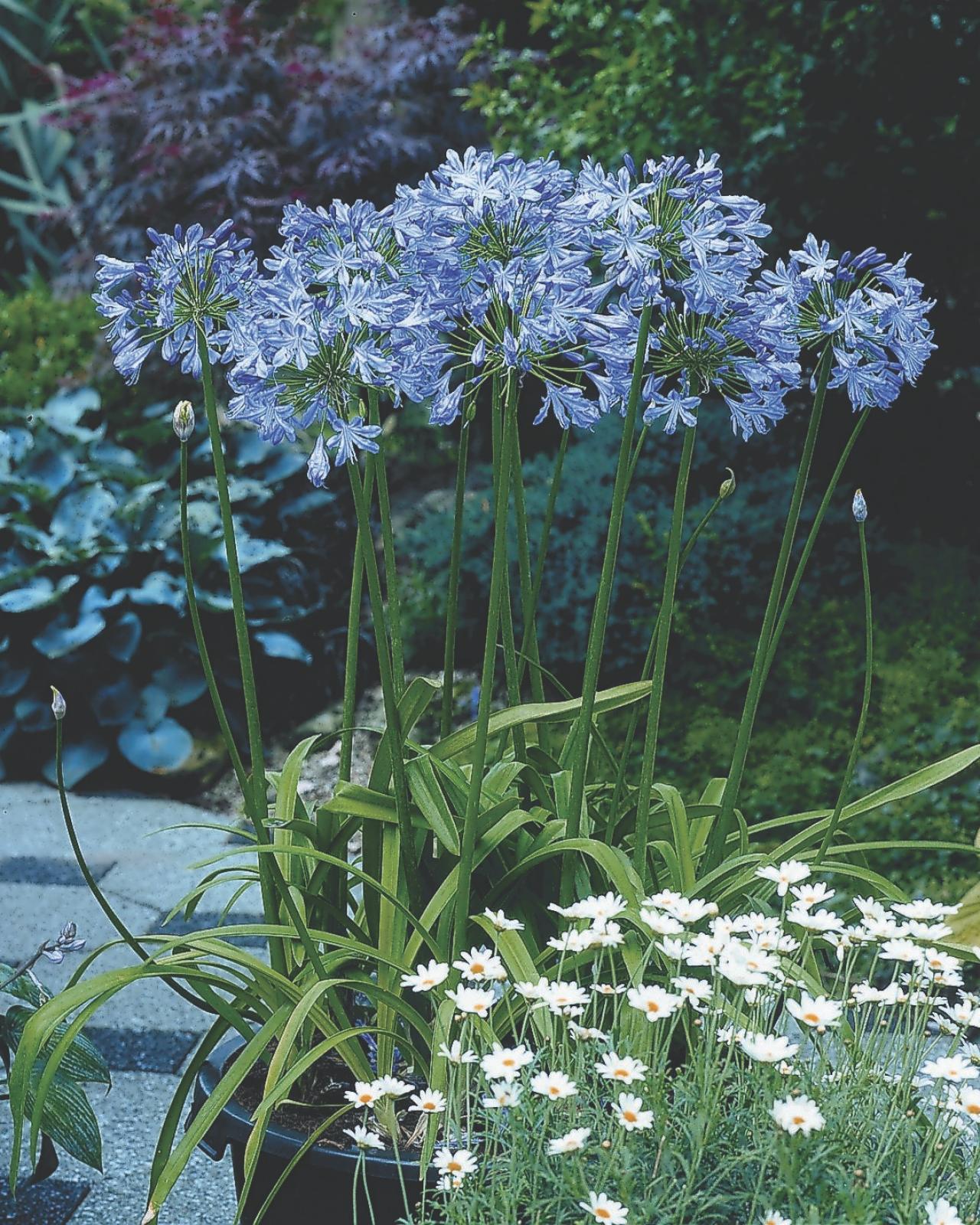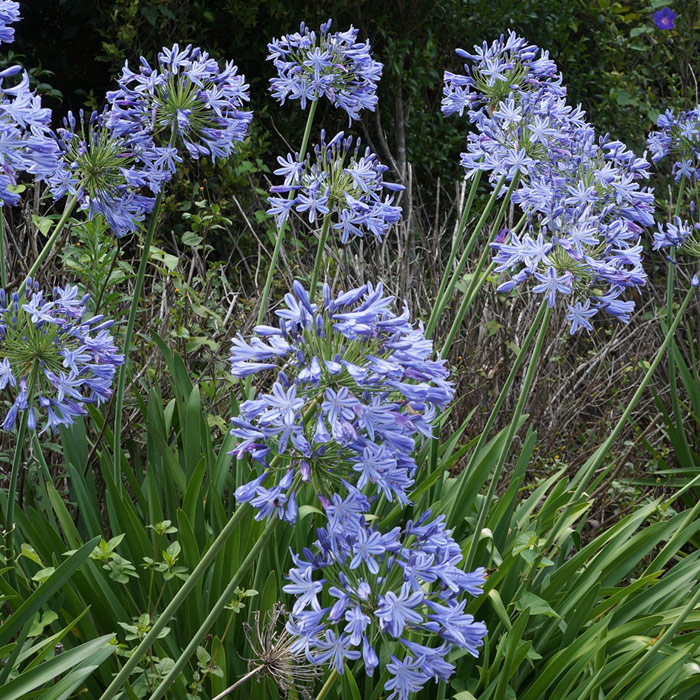Releasing the Secret to Successful Agapanthus Growing: Idea for a Flourishing Yard
In the realm of horticulture, growing agapanthus successfully calls for a tactical strategy that encompasses numerous aspects of plant care. By recognizing the nuances of agapanthus cultivation, one can produce an atmosphere where these plants flourish and bloom perfectly.
Growing Agapanthus: Ideal Practices
When planting Agapanthus, appropriate dirt prep work is vital for making certain successful development and development of these beautiful blossoms. Agapanthus, frequently understood as Lily of the Nile or African lily, thrives in well-draining soil with a somewhat acidic to neutral pH degree - Agapanthus. Prior to planting, it is essential to amend heavy clay dirts with natural issue such as compost or peat moss to boost water drainage and offer important nutrients for the plants
To plant Agapanthus, select an area that receives complete sunlight to partial shade, as this will certainly advertise healthy and balanced development and plentiful blooming. Dig an opening two times the size of the plant's root sphere and position the Agapanthus at the exact same deepness it was formerly expanding. Carefully backfill the opening with dirt, pushing down securely to eliminate any type of air pockets around the roots.
Water the freshly grown Agapanthus extensively and remain to keep the dirt uniformly wet, specifically during the plant's active growing season. Agapanthus. Using a balanced plant food once a month can further sustain the plant's development and blooming. By adhering to these finest practices for growing Agapanthus, you can create a magnificent display of these fascinating blossoms in your yard
Suitable Soil Issues for Agapanthus
For optimal growth and growing success of Agapanthus plants, ensuring the dirt conditions are ideal is crucial. Agapanthus prospers in well-draining dirt with a slightly acidic to neutral pH degree ranging from 6.0 to 7.0. This sort of soil permits sufficient water drainage, stopping waterlogging which can cause root rot. To enhance dirt drain, consider including natural matter such as compost or peat moss when preparing the planting website. Moreover, Agapanthus likes dirt that is rich in nutrients, so integrating a balanced fertilizer during the growing season can promote healthy growth and lively flowers.

Watering and Fertilizing Tips
To make certain healthy development and lively blossoms, appropriate watering and fertilizing strategies are important for successful Agapanthus farming. Agapanthus plants profit from routine watering, particularly during the growing period.
When it concerns feeding Agapanthus, a well balanced fertilizer with equivalent components nitrogen, phosphorus, and potassium can be used in the spring to promote healthy development and blooming. Slow-release fertilizers are excellent for providing nutrients progressively over an extensive duration. Prevent over-fertilizing, as this can lead to too much foliage development at the expense of blooms.
In addition, including raw material like compost right into the soil can boost nutrient degrees and improve dirt structure, helping in the total health of the Agapanthus plants. By complying with these watering and fertilizing tips, garden enthusiasts can guarantee their Agapanthus plants prosper and create sensational display screens of flowers.
Trimming and Deadheading Techniques
Proper trimming and deadheading techniques play a critical role in keeping the health and wellness and visual appeals of Agapanthus plants, enhancing the important practices of watering and feeding for successful growing. Trimming Agapanthus involves eliminating invested blossom heads, dead or yellowing leaves, and total shaping of the plant to advertise far better growth. Deadheading, the process of removing faded flowers, not only boosts the read the full info here plant's appearance yet also encourages additional blooming.
When deadheading Agapanthus, it is suggested to trim off the flower stem at the base making use of sharp, tidy shears. This process reroutes the plant's power from seed production back right into origin and foliage development, advertising a much healthier and more robust plant. Regular deadheading can extend the flowering duration of Agapanthus and prevent self-seeding, which can result in overcrowding.
In terms of trimming, Agapanthus usually benefits from a light trim after blooming to clean the plant and encourage fresh development. Reducing back the invested flower stems and getting rid of any kind of damaged or dead vegetation aids keep the plant's vitality and general appearance. Nonetheless, it is important to avoid cutting into the crown of the plant, as this can deteriorate its health.

Protecting Agapanthus From Pests and Diseases
Carrying out efficient pest and illness management approaches is essential to protecting the wellness and vigor of Agapanthus plants in farming. One common parasite that learn the facts here now impacts Agapanthus is the Agapanthus borer, a caterpillar that tunnels into the plant, triggering damage to the fallen leaves and blossoms.
Along with pests, Agapanthus are vulnerable to illness such as origin rot and fungal fallen leave areas. These issues can often be stopped by making certain proper drain and avoiding overwatering. Affected components of the plant ought to be immediately removed to stop further spread if signs of disease appear. Fungicides may additionally be made use of as a treatment procedure, following the supplier's instructions carefully. By staying attentive and resolving bug and disease problems without delay, garden enthusiasts can aid their Agapanthus flourish and thrive.

Verdict
Finally, successful farming of agapanthus calls for proper planting strategies, optimal dirt problems, adequate watering and feeding, regular trimming and deadheading, and defense from pests and illness. By complying with these techniques and tips, gardeners can make certain a growing yard filled up with stunning agapanthus blossoms. Agapanthus. Keep in mind to keep constant treatment and attention to information to promote the health and wellness and long life navigate here of these magnificent plants
When growing Agapanthus, correct dirt prep work is essential for making certain effective development and development of these stunning blossoms.Water the newly planted Agapanthus thoroughly and proceed to keep the soil evenly moist, particularly throughout the plant's active growing period.For optimal growth and blooming success of Agapanthus plants, guaranteeing the soil conditions are optimal is critical. When hair transplanting or planting Agapanthus, ensure the soil is well-prepared to give the essential structure for the plants to establish themselves successfully. One common pest that impacts Agapanthus is the Agapanthus borer, a caterpillar that tunnels right into the plant, creating damages to the flowers and fallen leaves.